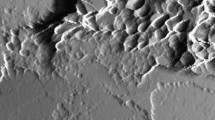Abstract
A method is described for estimation of the total hydroxyl content of the mineral of calcified tissues. Anorganic bovine bone and dental enamel were dissolved in a nonaqueous solvent (methanolic hydrogen chloride) and the water formed from hydroxyl and carbonate ions by acid dissolution of the mineral was determined by the Karl Fischer titration. Water formed by reaction of carbonate was calculated and subtracted from the total amount of water to give the quantity of water derived from hydroxyl ion. The samples were analyzed for inorganic constituents. Using simultaneous equations, based upon the electrochemical equivalence of ions on the surface and lattice of hydroxyapatite, the data of chemical composition were used to calculate the amounts of hydroxyl in each substance. The content of hydroxyl ion of anorganic bone based on this theoretical treatment, assuming 2 hydroxyls per molecule, was 1.40 m moles per gram, and by direct analysis was 1.01±0.026 (S.E.) m moles per gram. With a pooled dental enamel sample, theoretical and determined values for hydroxyl contents were 1.64 and 1.62 m moles per gram, respectively.
Résumé
Une méthode de détermination du contenu total en hydroxyle est décrite au niveau l' élément minéral des tissus calcifés. De l'os bovin anorganique et de l'émail dentaire sont dissouts dans un solvant non-aqueux (du chlorure méthanolique hydrogéné) et l'eau formée à partir des ions hydroxyle et carbonate, par dissolution acide du minéral, est déterminée par titration selon la méthode de Karl Fischer. L'eau, formée par réaction avec le carbonate, est calculée et soustraite du montant total de l'eau pour dèterminer la quantité d'eau, dérivée de l'ion hydroxyle. Les éléments inorganiques des échantillons sont ègalement déterminés. En utilisant des équations simultanées, basées sur l'équivalence électrochimique des ions à la surface et dans la maille de l'hydroxyle-apatite, les résultats des études de composition chimique sont utilisés pour calculer les quantités d'hydroxyle dans chaque substance. Le contenu en ion hydroxyle de l'os anorganique, basé sur ce traitement théorique, tenant compte de 2 hydroxyles par molécule, est de 1.40 moles par gramme, alors que, par analyse directe, on trouve 1.01±0.026 (S.E) m moles par gramme. Pour un échantillon d'émail dentaire, d'origine diverse, les valeurs théoriques et les valeurs expérimentales, relevées pour les contenus en hydroxyle, sont respectivement de 1.64 et 1.62 m moles par gramme.
Zusammenfassung
Es wird eine Methode zur Bestimmung des gesamten Hydroxylgehaltes im Mineral von verkalkten Geweben beschrieben. Anorganischer Knochen und Zahnschmelz vom Rind wurden in einem wasserfreien Lösungsmittel (Methanolhydrogenchlorid) gelöst und das aus Hydroxyl- und Carbonat-Ionen sich bildende Wasser beim sauren Auflösen des Minerals mit der Titration nach Karl Fischer bestimmt. Das aus der Carbonatreaktion entstehende Wasser wurde berechnet, von der gesamten Wassermenge abgezogen und so der vom Hydroxylion her stammende Wasseranteil ermittelt. Die Proben wurden auf anorganische Bestandteile hin untersucht. Unter Anwendung simultaner Gleichungen, die sich auf die elektrochemische Äquivalenz der Ionen an der Oberfläche und im Kristallgitter von Hydroxyapatit stützten, konnten die Werte der chemischen Zusammensetzung zur Berechnung der Hydroxylmenge in jeder der Substanzen benützt werden. Auf Grund der theoretischen Berechnung und unter Annahme von 2 Hydroxylgruppen pro Molekül fand sich im anorganischen Knochen ein Hydroxylionengehalt von 1,40 mMol/g; durch die direkte Bestimmung konnte ein solcher von 1,01±0,026 (S.E.) mMol/g nachgewiesen werden. In einer gepoolten Zahnschmelzprobe betrug der Hydroxylgehalt theoretisch berechnet 1,64 mMol/g und praktisch bestimmt 1,62 mMol/g.
Similar content being viewed by others
References
Armstrong, W. D., Singer, L.: Determination of fluoride in blood serum. Analyt. Chem.31, 105 (1959).
——: Composition and constitution of the mineral phase of bone. Clin. Orth. Rel. Res.38, 179 (1965).
Brekhus, P. J., Armstrong, W. D.: A method for the separation of enamel, dentin, and cementum. J. dent. Res.15, 23 (1935).
Brown, W. E.: Crystal growth of bone mineral. Clin. Orth. Rel. Res.44, 205 (1966).
Fiske, C. H., Subba Row, Y.: The colorimetric determination of phosphorus. J. biol. Chem.66, 375 (1925).
Hawkins, A. E.: A Karl-Fischer titration unit for routine use. Analyst89, 432 (1964).
Manly, R. S., Hodge, H. C.: Density and refractive index studies of dental hard tissues. J. dent. Res.18, 132 (1939).
Mitchell, J., Jr., Smith, D. M.: Aquametry. New York: Interscience Publishers, Inc. 1948.
Posner, A.: Personal Communication.
Termine, J. D., Posner, A. S.: Amorphous/crystalline interrelationships in bone mineral. Calc. Tiss. Res.1, 9 (1967).
——: Infrared analysis of rat bone: age dependency of amorphous and crystalline mineral fractions. Science153, 1523 (1966).
West, E., Christensen, B. E., Reinhard, R. E.: A micromethod for the determination of carbone dioxide in blood and other fluids. J. biol. Chem.132, 681 (1940).
Zipkin, I., McClure, F. J.: Salivary citrate and dental erosion. J. dent. Res.28, 613 (1949).
Author information
Authors and Affiliations
Additional information
This investigation was supported by Grant DE-1850 from the National Institute of Dental Research, National Institute of Health, Bethesda, Maryland.
Rights and permissions
About this article
Cite this article
Vatassery, G.T., Armstrong, W.D. & Singer, L. Determination of hydroxyl content of calcified tissue mineral. Calc. Tis Res. 5, 183–188 (1970). https://doi.org/10.1007/BF02017547
Received:
Accepted:
Issue Date:
DOI: https://doi.org/10.1007/BF02017547



